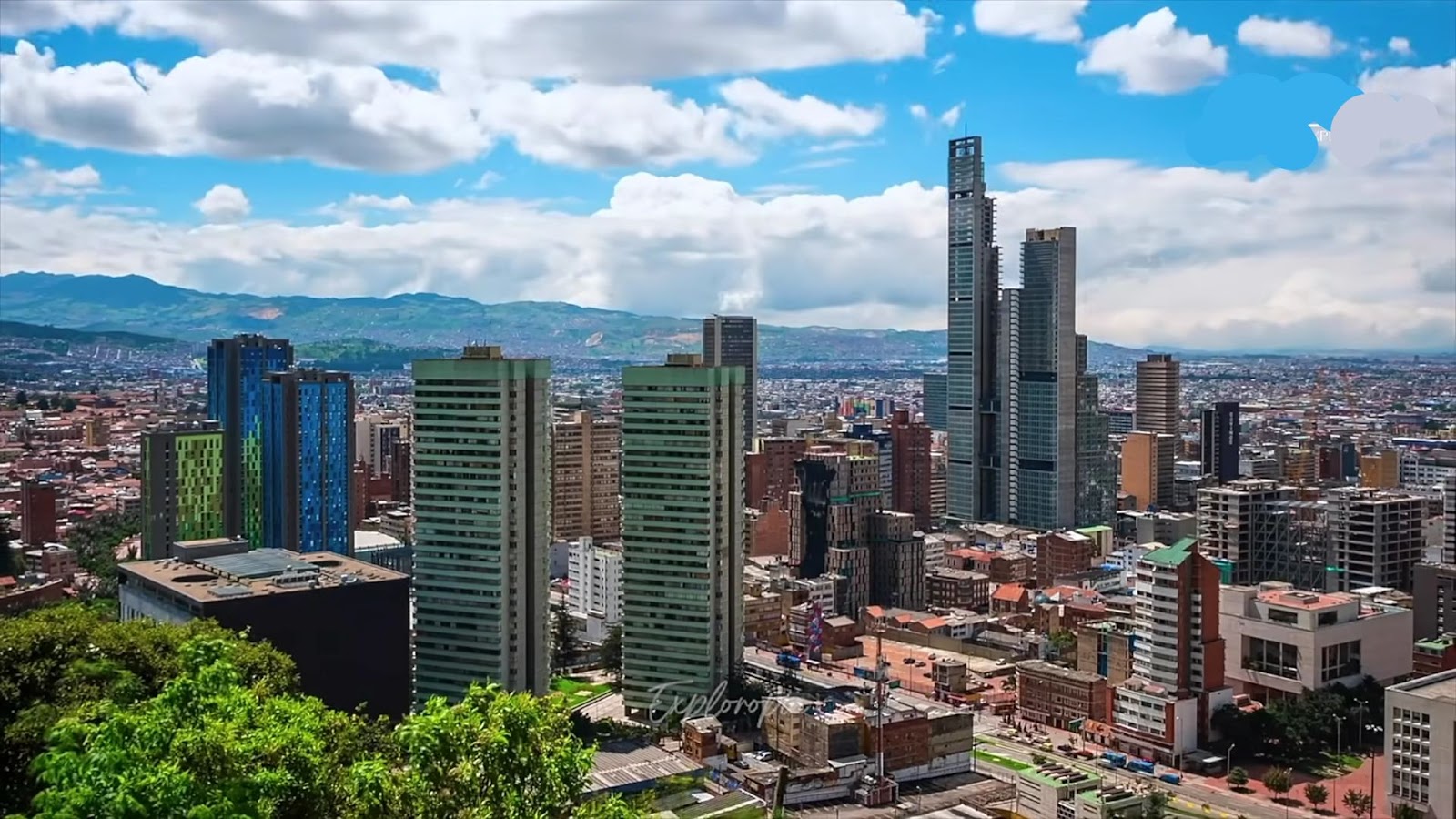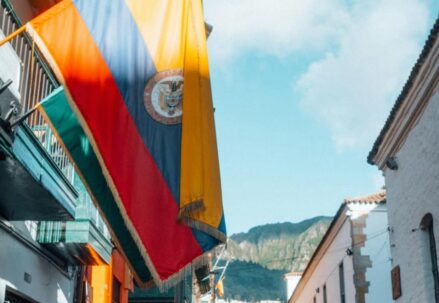Traveling offers a truly distinctive experience primarily due to the opportunity it provides to immerse oneself in the various customs unique to each destination visited. Colombia stands out as an immensely diverse nation, brimming with distinct features and traditions, showcasing a tapestry of cultural richness.
Spanning its expansive landscape, Colombia encompasses five distinct natural regions, each home to diverse peoples and communities, each with its own defining characteristics. Ponder the immense variety of traditions encompassing music, cuisine, perspectives on life, and festive revelries across these regions.
The array of traditions is boundless, yet several customs resonate widely among Colombians, painting a vibrant picture of the country’s cultural fabric. Here, we’ll delve into some quintessential Colombian traditions essential for anyone embarking on a holiday in this enchanting land.
Experience Colombia with a Cup of Tinto
Colombia, known for its rich coffee culture, has a particular affection for “Tinto,” a word that translates to ‘ink.’ This reference aptly describes the beverage’s deep, dark hue, akin to that of black ink. This cultural staple is much more than a drink to Colombians; it’s a tradition, a daily ritual, and a symbol of Colombian hospitality.
Every city and town in Colombia pulses to the rhythm of Tinto. Be it breakfast, lunch, a quick street side snack, or a leisurely dinner, a cup of Tinto is always within reach. The brew isn’t constricted by time or place, and there’s no right or wrong hour to savor it.
The love for Tinto in Colombia can be traced back to its status as one of the world’s largest coffee producers. Colombia ranks fourth in global coffee production, but don’t be misled into believing that Tinto is a gourmet coffee experience. Far from it, Tinto is the simplest form of coffee, often brewed quickly and served piping hot. The taste may be somewhat rustic, but its charm lies there.
Despite its simple preparation and basic flavor profile, Tinto holds a special place in the hearts of Colombians. The act of sipping on a cup of Tinto transcends the beverage itself, turning into a cherished tradition, a moment of respite, or a means to connect with others. Here are some quick pointers about this iconic drink:
- Tinto is ideally served black, though some regions add a hint of ‘canela’ (cinnamon) to their brew;
- While it’s not a gourmet coffee, Tinto is an integral part of Colombian culture and hospitality;
- Be open to try Tinto from street vendors or local cafes to experience the true essence of Colombia;
- Tinto is not about the complex flavors or expensive beans; it is a testament to the simple pleasures of life in Colombia.
In a nutshell, to understand the heart and soul of Colombia, one must indulge in the tradition of Tinto. Despite its simplicity, it captures the essence of the country’s culture, making it an essential part of any Colombian experience.
Savor the Simplicity of Colombia’s ‘Tinto’ Ritual
Colombia, a country renowned for its coffee production, boasts a unique coffee-drinking custom fondly known as “Tinto.” This term refers to the dark, almost ink-like coffee that is regularly consumed by Colombians throughout the day.
Tinto is a ubiquitous presence across Colombian cities and towns. It is neither limited by the time of day nor circumscribed to specific meal times. Many savors it with breakfast while others enjoy it during lunch or as a quick pick-me-up during the day. Street vendors, cafes, homes – every nook and cranny in Colombia seems to radiate the rich aroma of freshly brewed Tinto.
Although Colombia is the world’s fourth-largest coffee producer, Tinto is not a gourmet coffee experience. The brew is simple, often quick, and to some, it might even lack the refined flavors of sophisticated coffees. Yet, that’s where Tinto’s charm lies; it is a testament to the unpretentious and wholehearted spirit of Colombia.
Considered an integral part of Colombian culture, Tinto encapsulates a deep sense of tradition and community. Savoring a cup of Tinto is more than just a routine; it’s an act of camaraderie, a shared experience that connects Colombians across different walks of life. Here are some quick pointers to enhance your Tinto experience:
- Tinto is traditionally served black. However, in some regions, a dash of ‘canela’ or cinnamon is added to enhance flavor;
- Tinto is not just about enjoying coffee. Embrace the cultural significance that comes with each cup;
- To fully experience Tinto, try it from local cafes or street vendors. The rustic charm of these places adds to the authenticity of the experience;
- Remember, Tinto is a symbol of Colombian hospitality. Accepting a cup is a way to connect with the locals and their traditions.
‘Rumba’: The Heartbeat of Colombian Celebrations
In the vibrant landscape of Colombian culture, ‘Rumba’ represents an energetic social gathering or a lively party. It is a manifestation of the Colombian spirit of celebration, where any occasion, big or small, calls for a gathering of family and friends.
An essential component of Rumba is dancing. Whether it be children, farmers, the elite, or the elderly, everyone sways to the rhythmic beats that permeate the air. Dancing is not just a form of entertainment; it’s a love language, a way of expressing joy and camaraderie.
Adding to the festive spirit is the popular local drink, ‘Aguardiente’ or ‘Firewater.’ Strong and distinctive, Aguardiente is often the drink of choice at Rumba parties. It is perfectly acceptable to decline, but rarely will a Colombian pass up on the fiery goodness of Aguardiente.
A Colombian Rumba is anything but subdued. It pulsates with exhilarating music, laughter, and effusive conversations, making it an experience to remember. Here are some useful tips to enjoy a Rumba party:
- Be prepared to dance. Even if you’re not a seasoned dancer, give it a shot. It’s all about having fun;
- Try ‘Aguardiente’ for an authentic taste of Colombian spirit, but always drink responsibly;
- Embrace the vivacious atmosphere. Colombian parties tend to be loud, so relax and get into the festive mood;
- Don’t shy away from engaging with locals. Not only will this create a memorable experience, but it’s also a great way to learn more about Colombian culture.
The Ever-Satisfying ‘Arepa’: Colombia’s Favorite Comfort Food
In the culinary tapestry of Colombia, ‘Arepa’, a versatile corn cake, occupies a special place. Each Colombian region boasts its unique version of Arepa, differing in filling, size, and preparation. Yet, what unifies all variations is the main ingredient: corn. A staple foodstuff, Arepa satiates hunger and serves as a meal accompaniment or a standalone snack at any time of the day.
Plain, white arepas are typically served as fillers during meal times, owing to their neutral flavor profile. Then there are the generously sized versions packed with cheese, providing a delightfully savory breakfast experience.
When traveling along Colombia’s coast, don’t miss out on the ‘Arepa de Huevo’—a fried arepa encasing a soft, runny egg. Add a dollop of sour cream and savor this Colombian specialty. To appreciate the true flavors of Colombian cuisine, exploring their myriad of Arepas is a culinary journey worth undertaking.
Consider these tips for an enriching Arepa experience:
- Venture out and try different types of Arepas. Each region has its unique twist, adding to the culinary diversity;
- Enjoy Arepas as they are intended – at any time of the day. They make for a great breakfast, lunch, dinner, or snack;
- Pair Arepas with local beverages for a delightful Colombian meal.
Christmas in Colombia: A Celebration Like No Other
As the calendar flips to December 16, Colombia embraces the Christmas spirit quite enthusiastically. Homes, parks, shopping centers, and even airports are adorned with decorations, lighting up the country in festive cheer.
Christmas, much like any other celebration in Colombia, is a time to gather with family and friends. It’s a season of feasting on traditional festive foods, including ‘Buñuelos’—deep-fried dough balls, and ‘Natilla’—a type of custard, both specifically associated with Christmas.

In the run-up to Christmas Day, Colombian families uphold the tradition of caroling, often accompanied by tambourines and maracas, infusing their homes with warmth and joy. For Colombians, Christmas is more than just a holiday; it’s an encapsulation of their deeply ingrained values of togetherness, celebration, and shared happiness.
To fully experience a Colombian Christmas, consider the following:
- Engage in Christmas preparations, from decorating to kitchen prep—each activity holds significance;
- Sample traditional festive foods. They’re not only delicious but also provide insight into Colombian Christmas traditions;
- Participate in caroling if given the opportunity. It’s an enriching way to immerse in local customs and celebrations.
The Colombian Love Affair with Cheese
In the Colombian culinary scene, one often overlooked yet predominant feature is the use of ‘queso fresco,’ or fresh, white farmer’s cheese. Despite not being a country steeped in cheese traditions like France or Italy, Colombians have a surprising affection for incorporating cheese into their dishes, notably their sweet treats.
A striking instance of this unique culinary preference is the Colombian habit of dropping cubes of cheese into hot chocolate. While it may raise eyebrows among non-natives, Colombians swear by this savory-sweet combination. The cheese softens in the warm chocolate, yielding a unique texture and flavor combination that has become a cherished comfort food.
Furthermore, Colombians aren’t shy about sprinkling cheese on top of their fruit salads or pairing it with fried bananas. You’ll also commonly find cheese-stuffed bread in various shapes and sizes, making it an incredibly versatile ingredient in the Colombian kitchen.
When indulging in Colombian cuisine, consider these tips:
- Be open to unconventional food pairings, like hot chocolate with cheese. It’s a signature Colombian combination worth trying;
- Look out for dishes that incorporate cheese. They offer an insight into the distinctive food habits of Colombians;
- Don’t hesitate to ask about the ingredients or preparation methods. It’s a good way to learn about Colombian culture.
Celebrating the Colombian Spirit
Characterized by their infectious joy, Colombians are an incredibly welcoming and cheerful bunch. They love engaging in conversations, creating connections, and treating everyone, including strangers, with familial warmth.
The peace and stability that now reign in the country after years of conflict have only amplified this joyous spirit. Colombians are thrilled to see the inflow of tourists and are eager to introduce them to the beauty and vibrancy of their land.
Their past may have been riddled with difficulties, but Colombians have always demonstrated an admirable spirit of resilience and creativity. This entrepreneurial zest is evident in various aspects of their lifestyle. Colombians have a knack for making something extraordinary out of nothing and doing so with a radiant smile on their faces.
For a truly immersive Colombian experience, remember these pointers:
- Embrace the welcoming nature of Colombians. It will enrich your trip and offer a deeper cultural understanding;
- Show an interest in learning about their past. It holds critical significance in shaping the resilient spirit of Colombians;
- Spend time exploring local spots and trying unique experiences. Each place and practice holds a story of the dynamic, entrepreneurial Colombian spirit.
A Display of Unwavering Patriotism in Colombia
Colombians share an intense pride and love for their homeland, a sentiment that is palpable in their everyday life. Their patriotism is often showcased in their conversations, attire, and even their celebrations.
It is quite common to find Colombians expressing their admiration for the country’s diverse traditions, vibrant cities, and rich cultural heritage. Demonstrations of patriotism often include wearing attire in the country’s colors or accessorizing with bracelets and hats flaunting the Colombian flag.
Notably, on soccer matchdays, a wave of yellow, blue, and red sweeps across the country. From corner shops to corporate offices, everyone sports the Colombian jersey, reflecting the united spirit of the nation.
When visiting Colombia, take note of:
- The Colombian pride that’s evident in every aspect of their lives. It’s a testament to the country’s vibrant culture and warm people;
- The public display of patriotism, particularly during national events or soccer matches. Join in, if comfortable—it’s a fun way to experience Colombia’s fervor;
- The warm conversations that Colombians are open to about their homeland. It provides a great opportunity to learn more about the country’s amazing features.
The Quintessential Colombian ‘Ñapa’
In the Colombian shopping culture, the term ‘ñapa’ assumes great importance. It refers to a small extra given at no cost when purchasing something, typically foods like bread or mixed fruit drinks like Salpicón. The act of asking for a little extra, or a ‘ñapa,’ is deeply ingrained in Colombian traditions.
While such a custom might seem unusual in some cultures, Colombians view it as a friendly exchange that doesn’t inconvenience the seller. Whether it’s an additional bun in a baker’s dozen or an extra serving of Salpicón, asking for a ‘ñapa’ is a common practice in Colombia.
This tradition extends to other areas of commerce, too. For instance, when buying fruits, vegetables, or flowers in bulk from a market, it’s not uncommon to receive a little something extra as a ‘ñapa’.
While navigating the Colombian shopping scene, consider these tips:
- Don’t hesitate to ask for a ‘ñapa’ when making a purchase. It’s a local custom and largely accepted;
- Be gracious, whether you receive a ‘ñapa’ or not. The spirit of this tradition is in the friendly exchange, not the extra goods;
- Explore local markets. They not only offer a vibrant shopping experience but also help you engage with the ‘ñapa’ tradition firsthand.
Conclusion
In conclusion, the allure of traveling lies in its ability to introduce us to the rich tapestry of customs and traditions that define each unique destination. Colombia, with its diverse natural regions and vibrant cultural heritage, stands as a testament to the vastness of human experience. Exploring Colombian traditions, from music to cuisine and beyond, adds depth and meaning to any journey through this captivating country. So, whether you’re planning a holiday or simply seeking new adventures, Colombia promises a remarkable and unforgettable experience filled with cultural richness and diversity.





